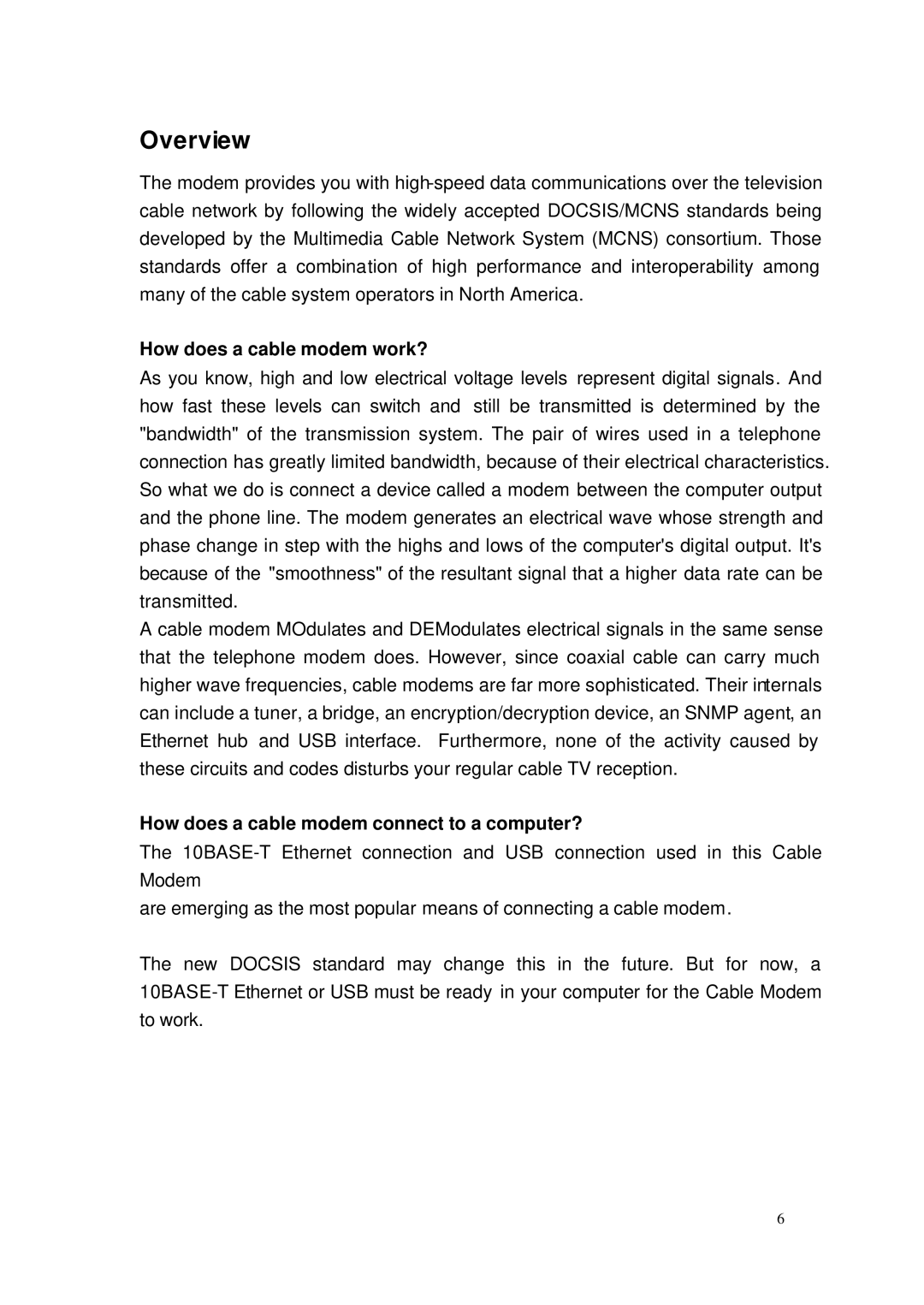Overview
The modem provides you with
How does a cable modem work?
As you know, high and low electrical voltage levels represent digital signals. And how fast these levels can switch and still be transmitted is determined by the "bandwidth" of the transmission system. The pair of wires used in a telephone connection has greatly limited bandwidth, because of their electrical characteristics. So what we do is connect a device called a modem between the computer output and the phone line. The modem generates an electrical wave whose strength and phase change in step with the highs and lows of the computer's digital output. It's because of the "smoothness" of the resultant signal that a higher data rate can be transmitted.
A cable modem MOdulates and DEModulates electrical signals in the same sense that the telephone modem does. However, since coaxial cable can carry much higher wave frequencies, cable modems are far more sophisticated. Their internals can include a tuner, a bridge, an encryption/decryption device, an SNMP agent, an Ethernet hub and USB interface. Furthermore, none of the activity caused by these circuits and codes disturbs your regular cable TV reception.
How does a cable modem connect to a computer?
The
are emerging as the most popular means of connecting a cable modem.
The new DOCSIS standard may change this in the future. But for now, a
6
